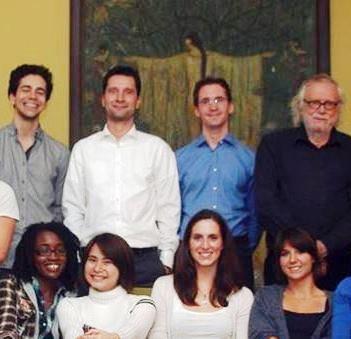
Submitted by Administrator on Sat, 14/12/2013 - 16:47
In December 2013, the world’s leading provider of online impact information published a list of the 100 most popular scientific research articles of 2013. Thirty nine different journals published papers that made it to the top 100, as did 201 universities worldwide. The most successful university was Harvard, with 12 entries. However Cambridge led the field from the UK with 2 entries, both authored by members of its Psychometrics Centre Strategic Network using information provided by the myPersonality database. So – many congratulations to Michal and David for yet another major success!
Number 9 out of 100
Kosinski, M., Stillwell, D. & Graepel, T. (2013) Private traits and attributes are predictable from digital records of human behavior. Proceedings of the National Academy of Sciences, 110 (15) 5733-5734; doi:10.1073/iti1513110
Number 21 out of 100
Schwartz, J., Kem, M., Dziurzynski, L., Ramones, S., Agrawal, M., Shah, A., Kosinski, M., Stillwell, D., Seligman, M. & Ungar, L. (2013) Personality, Gender, and Age in the Language of Social Media: The Open-Vocabulary Approach. PLOS One, September 25 2013, DOI: 10.1371/journal.pone.0073791
Governments, research councils and charitable funders alike are increasingly demanding that the research they support should not just be published, but should also be shown to have produced tangible results. Traditional impact measures have included the citation rates of published papers and the impact factors of the journals in which the papers appear. These measures are used to assess the research productivity not just of the universities themselves but also of their departments and staff members. However, interest in impact is not limited to academia. Publishers, advertisers, politicians and charities, indeed all of those individuals and organisations concerned with getting a message across, are constantly on the lookout for ways in which the reach of their activities can be assessed. And increasingly they are looking to the online world for the methods and results they need.
This new field is called altmetrics. All altmetric assessment draws its information from several sources. These include number of times an article is viewed, the number of occasions on which it is discussed (e.g. in blogs, wikis, social media or tweets) , the number of times it is bookmarked or appears on a bookmarking service (e.g. CiteULike or Mendeley) and the number of times it is cited (e.g. on Google Scholar, Scopus or Pubmed Central). Organisations that provide altmetric services include altmeric.com, Citedin, Impact Story, Plum Analytics and several of the online publishers, including Biomed Central, the Public Library of Science, Nature and Elsevier.
